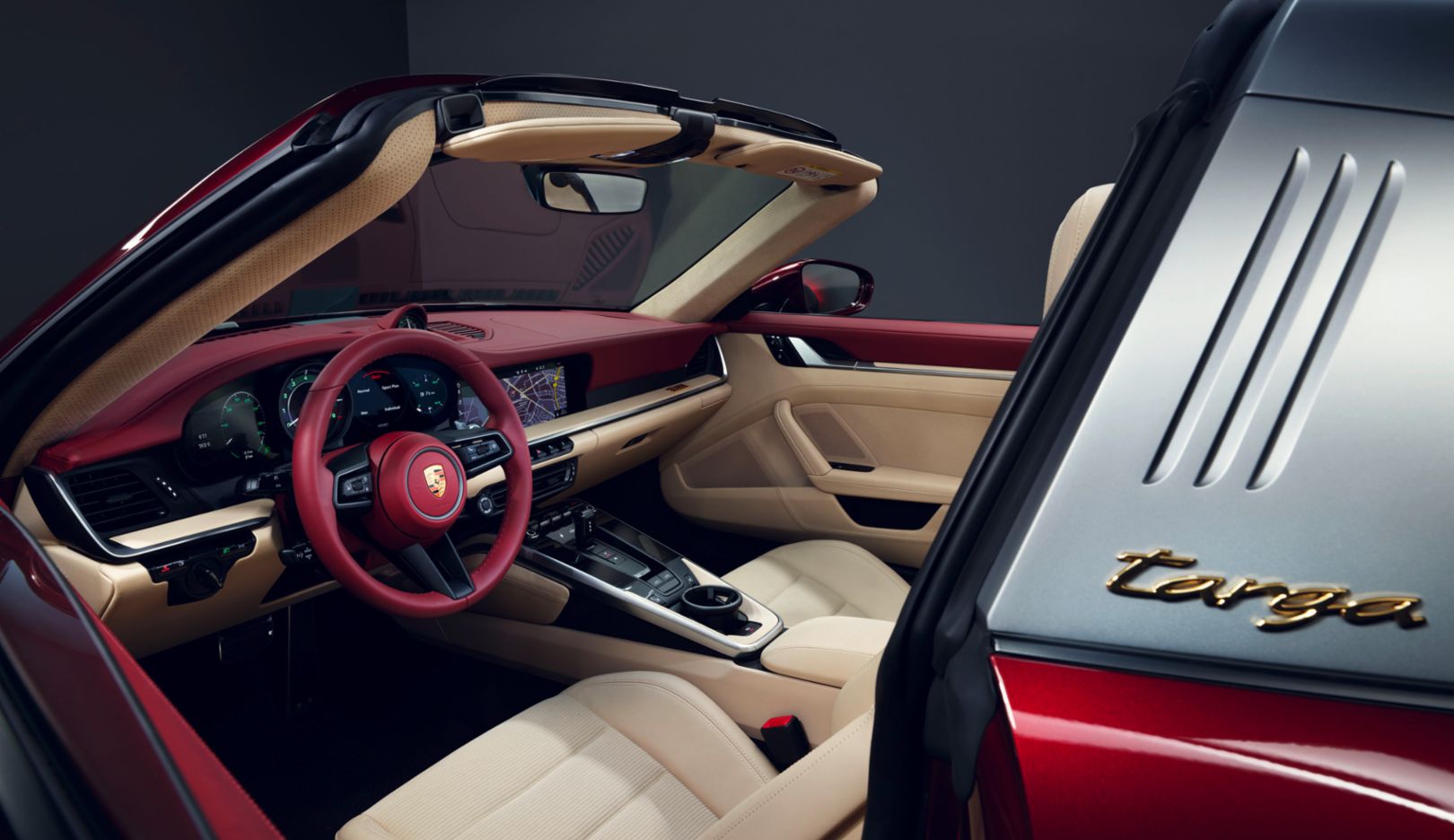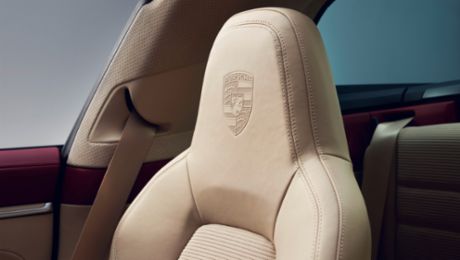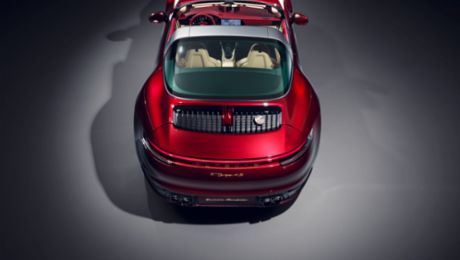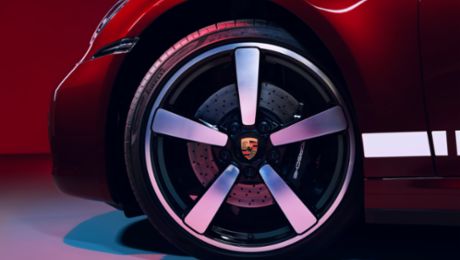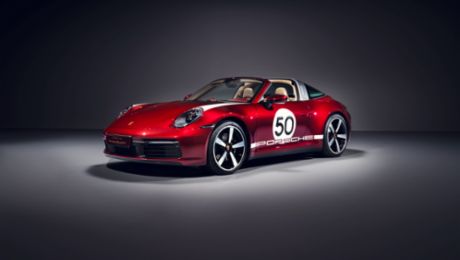In decades past, dark red was always a popular exterior car color. The Porsche 356 colors were known as Pascha Red (color code Reutter 523, 524), Ruby Red (Reutter 702) and Polyantha Red (Reutter 604). On the early 911 models, the color was known as Burgundy Red. The Porsche literature of the '50s – Driver’s Manuals and books – was also produced in dark red and white. The lettering for workshops, Porsche retailers and dealerships also radiated in a strong red hue. Just like the corduroy fabric, the color red has been modified and adapted to modern times. Intense and in high quality, Cherry Metallic creates a harmonious impression in combination with the silver Targa bar and the gold-colored logo.
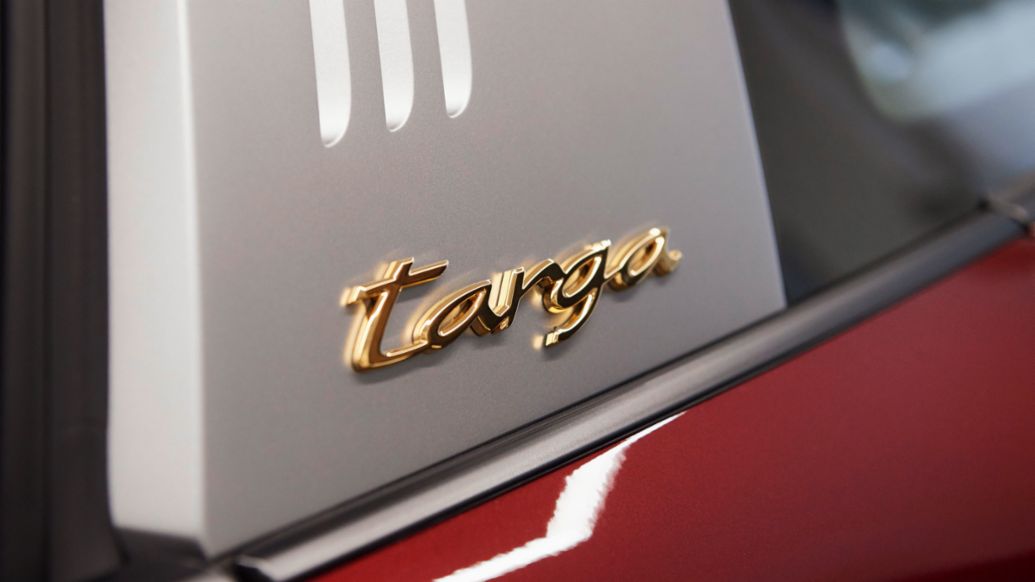
Spears and start numbers: Motorsport graphics as high-quality wraps
Another striking design element is the spear motorsport graphic on the front fenders: a high-quality white decal in the shape of a spear. The spears are a reference to the early days of motor sport. Back then, racing cars were painted after crashes to hide any traces of damage. Later, the spears were used as a kind of war paint, and were one of the first design elements in motorsport.
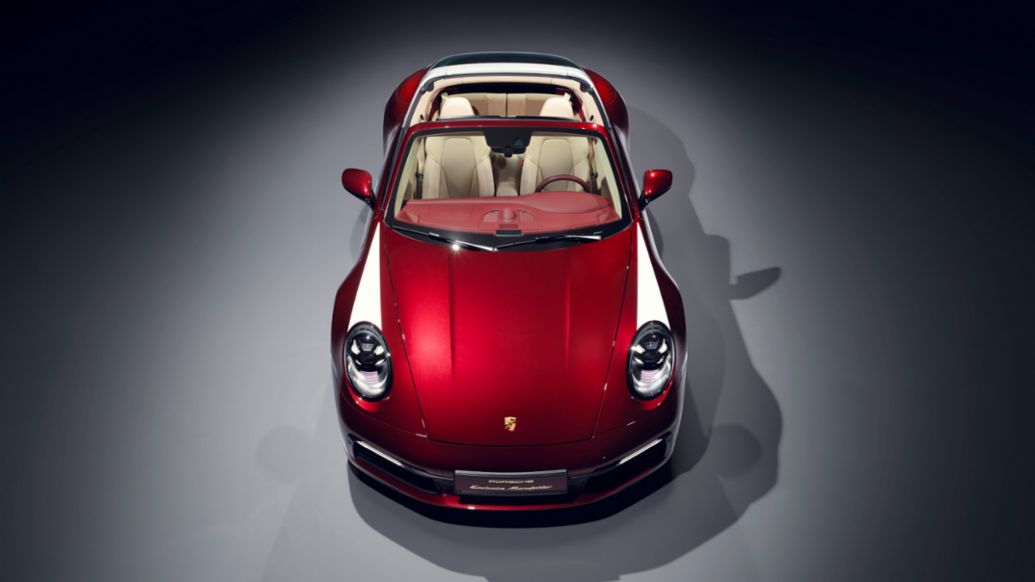
The sides of the Targa Heritage Edition also feature motorsport graphics with historic designs. If desired, the sporty look can be supplemented with start numbers, which can be selected individually from 0 to 99.
Corduroy: fabric with special feel
Corduroy, a softly ridged fabric, has already been used to trim the seat center panels of the Porsche 356 from 1952 onwards. Soft and elegant, corduroy represented the spirit of the times and the fashion of the decade. It was also confirmation of the car's quality because it provided better seat ventilation as well as being more slip-resistant and thereby safer.
“Fabric and haptics are very important and bring back memories, perhaps of childhood, of bygone days – of the Porsche cars of yesteryear ...” Volker Müller
“Corduroy, Pepita, Pasha and Tartan. These are all historic fabrics and patterns that we are reviving in the interior of the new Heritage Design models,” reports Volker Müller, Head of Colour & Trim. “Fabric and haptics are very important and bring back memories, perhaps of childhood, of bygone days – of the Porsche cars of yesteryear ...” says Müller. “It was particularly exciting to study and test the old fabrics and patterns. We then reinterpreted the materials to meet current safety and comfort requirements and had them produced,” explains Stéphanie Kleiböhmer, Colour & Trim Designer.
In the 911 Targa 4S Heritage Design Edition, corduroy in Atacama Beige finds its place as a style-defining element on the seats and door panels. “However, the relatively high wool content in the original fabric no longer met today's requirements,” says Volker Müller. Alternative materials were therefore used, resulting in a sharper look.
Cord is a woven fabric in which a second warp or weft thread is introduced. The fabric is held together by loops which end in a fiber pile. Typical for all cord types are the longitudinal ribs which vary in spacing and number. The term cord is derived from the English corduroy.
In Central Europe, cord is also commonly known as Manchester. The first looms were set up in this town in the northwest of England at the end of the 18th century.
